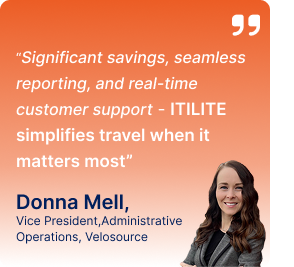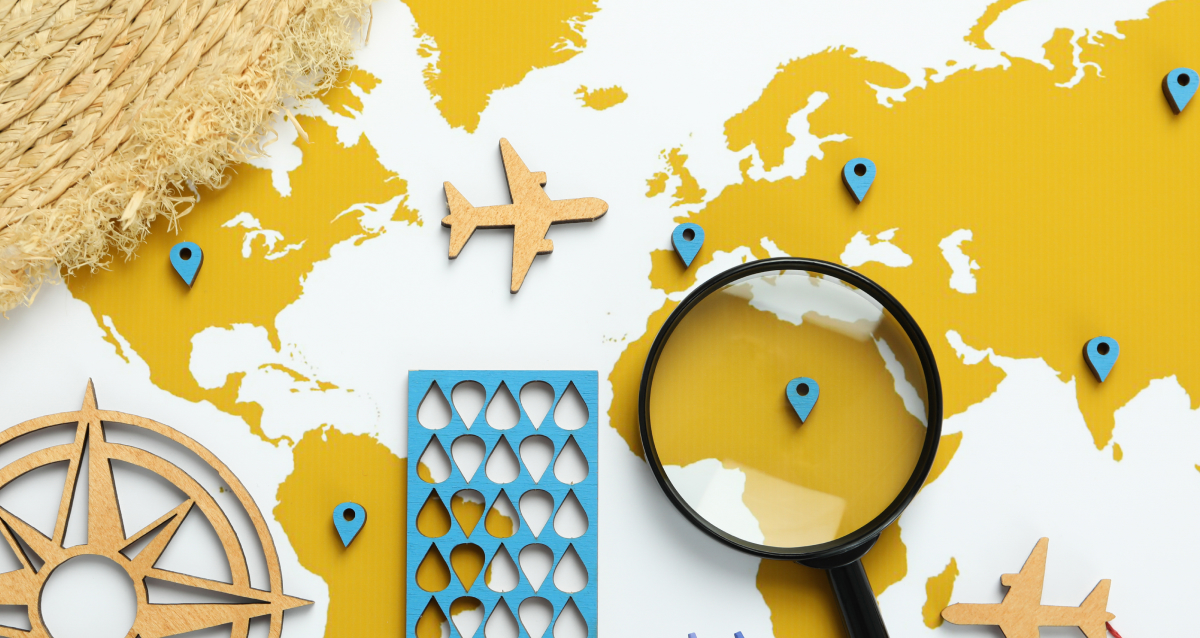
A few years ago, the words ‘climate change’ and ‘global warming’ were just buzzwords. However, in the present day and age, it has become a necessity. Tackling these environmental issues has become extremely important before the environment enters emergency mode. Hence, various organizations from different sectors, including corporate travel, have started to focus on reducing their environmental impact across all operational aspects.
Companies can track their impact on the environment by having a corporate travel sustainability report. These reports are essential tools for tracking and communicating an organization’s progress toward its sustainability goals. These reports provide valuable insights into business travel’s environmental footprint and help identify improvement areas.
This blog post will discuss the key metrics that should be included in your corporate travel sustainability report.
1. Carbon Footprint
One of the most critical metrics in a corporate travel sustainability report is the carbon footprint associated with travel activities. Carbon dioxide (CO2) emissions from transportation contribute significantly to climate change. By measuring and reporting these emissions, you can identify the extent of their impact and set reduction targets.
The carbon footprint can be calculated by considering various factors such as mode of transport, distance traveled, and fuel consumption. This metric provides a baseline for tracking progress in reducing emissions over time. By including the carbon footprint metric in your corporate sustainability report, you demonstrate your organization’s commitment to measuring and addressing its environmental impact. This transparent reporting allows you to track progress and encourages stakeholders and clients to support and engage in sustainable travel practices.
2. Modal Split
Modal split refers to the distribution of travel modes used by employees within an organization. This metric helps identify the percentage of travel done by air, road, rail, or other means. Analyzing the modal split provides insights into the reliance on high-emission modes of transport, such as air travel, versus more sustainable options.
This enables you to identify areas where sustainable alternatives can be promoted and carbon emissions can be reduced. As a travel manager, you must encourage using more environmentally friendly modes, such as public transportation or rail, and reducing reliance on high-emission modes like air travel, which contributes to a more sustainable travel ecosystem.
Furthermore, tracking and reporting the modal split metric demonstrates your organization’s commitment to sustainable initiatives. This encourages stakeholders and clients to participate in the vision and mission of sustainable business travel. It reinforces your organization’s environmental responsibility and aligns with the expectations of customers, employees, and investors who prioritize corporate travel sustainability.
3. Average Trip Distance
Understanding the average trip distance is important for assessing corporate travel’s overall efficiency and environmental impact. By analyzing this metric, organizations can gain insights into the distance employees travel for business purposes and identify opportunities to reduce travel distances, promote alternatives, and minimize carbon emissions.
Calculating The Average Trip Distance: Organizations need to collect data on the distances traveled for each business trip to calculate the average trip distance. This information can be obtained from travel booking systems, expense management tools, or travel reimbursement records. It is essential to consider one-way and round-trip distances to obtain an accurate average.
Analyzing the Average Trip Distance: Once the data is collected, it is essential to analyze and interpret the average trip distance information. Some of the critical parameters to consider while analyzing the average trip distance are baseline measurements, comparison and benchmarking, trends, and change, variations in travel mode, etc.
Setting Targets and Tracking Progress: Use the average trip distance metric to set targets for reducing travel distances within the organization. For example, you might set a goal to reduce the average trip distance by a certain percentage within a specific timeframe. Regularly track progress towards these targets and assess the effectiveness of implemented strategies.
Reporting: Include the average trip distance data and analysis in your business travel sustainability report. Present the information clearly and visually appealingly, such as through charts or graphs, to enhance understanding.
4. Travel Frequency
Tracking the frequency of corporate travel is essential for understanding the overall travel demand within an organization. Travel frequency refers to the number of business trips taken by employees within an organization over a specific period. It is an essential metric for assessing the volume and frequency of travel within the organization and its impact on corporate travel sustainability.
This metric helps identify patterns and trends that can inform strategies to reduce unnecessary trips. Organizations can minimize travel requirements and associated environmental impacts by encouraging alternatives such as teleconferencing or office management software tools.
5. Estimated Travel Distance
The estimated travel distance is one of the most important metrics you should incorporate in your corporate sustainability report to ensure green travel benefits. Estimated travel distance is the distance employees travel from one geographical location to another. This can be either measured in miles or kilometers.
This metric helps quantify the distance covered by various modes of transportation, such as vehicles, airplanes, or trains, and provides an estimate of the environmental impact associated with travel. This helps identify opportunities for reducing emissions through strategies like remote work or video conferencing.
6. Energy Consumption
Energy use is the primary element influencing environmental sustainability and directly contributes to releasing greenhouse gas emissions and other harmful substances that impact the environment. As a result, the energy consumption of every company holds significance, as well as the measurements employed to monitor such consumption.
By measuring energy consumption, organizations can identify areas of high energy usage and implement strategies to reduce it. This can include promoting energy-efficient transportation options, using environmentally friendly accommodations, and encouraging energy-saving practices during meetings and events. This, in turn, helps you in your business travel management process.
7. Sustainability Reporting Standards
Sustainability reporting standards are a set of guidelines and frameworks that provide a common framework for organizations to report on their sustainability performance. These standards are designed to help organizations measure, manage, and communicate their environmental, social, and governance (ESG) impacts and initiatives.
Several widely recognized business travel sustainability reporting frameworks and standards exist, and they are supported by reputable organizations with distinguished individuals serving on their boards. A minimum of seven such frameworks and standards are known to be available. They are:
- GRI: Global Reporting Initiative
- SASB: Sustainability Accounting Standards Board
- TCFD: Taskforce on Climate-Related Disclosures
- CDP: Carbon Disclosure Project
- IIRC – International Integrated Reporting Council
Incorporating and adopting sustainability reporting standards allows organizations to enhance transparency, accountability, and comparability of their sustainability performance. It enables stakeholders, including investors, customers, employees, and communities, to assess your organization’s environmental and social impacts and make informed decisions based on the reported information.
8. Supplier Sustainability
Corporate travel management involves engaging various suppliers, including airlines, hotels, and ground transportation providers. Including supplier sustainability metrics in your report can help assess the environmental performance of these partners.
Key supplier sustainability metrics may include carbon emissions, waste management practices, and environmental certifications. Collaborating with suppliers that align with your sustainability goals can contribute to a more sustainable travel ecosystem.
Make your Organization’s Business Travel Sustainable!
A well-rounded corporate travel sustainability report should include a range of metrics that capture the environmental impact of travel activities, assess employee engagement and awareness, evaluate supplier sustainability, and many others. By measuring and reporting these metrics, organizations can track progress, identify areas for improvement, and foster a culture of sustainability.
Companies must seek sustainable business travel programs in light of the carbon emissions that business travel generates. The itilite travel management software offers functionality that enables companies to track their carbon footprint. Additionally, users have the option to request personalized reports to regularly monitor their business travel’s environmental impact, whether on a monthly or quarterly basis.
To learn more, get a free demo of itilite now.













